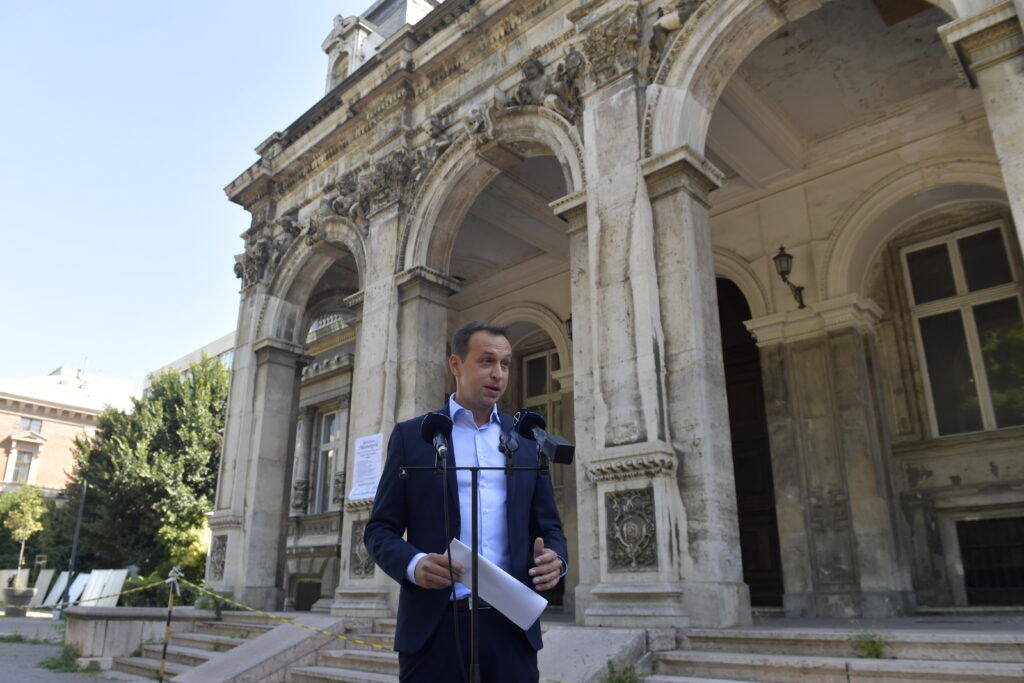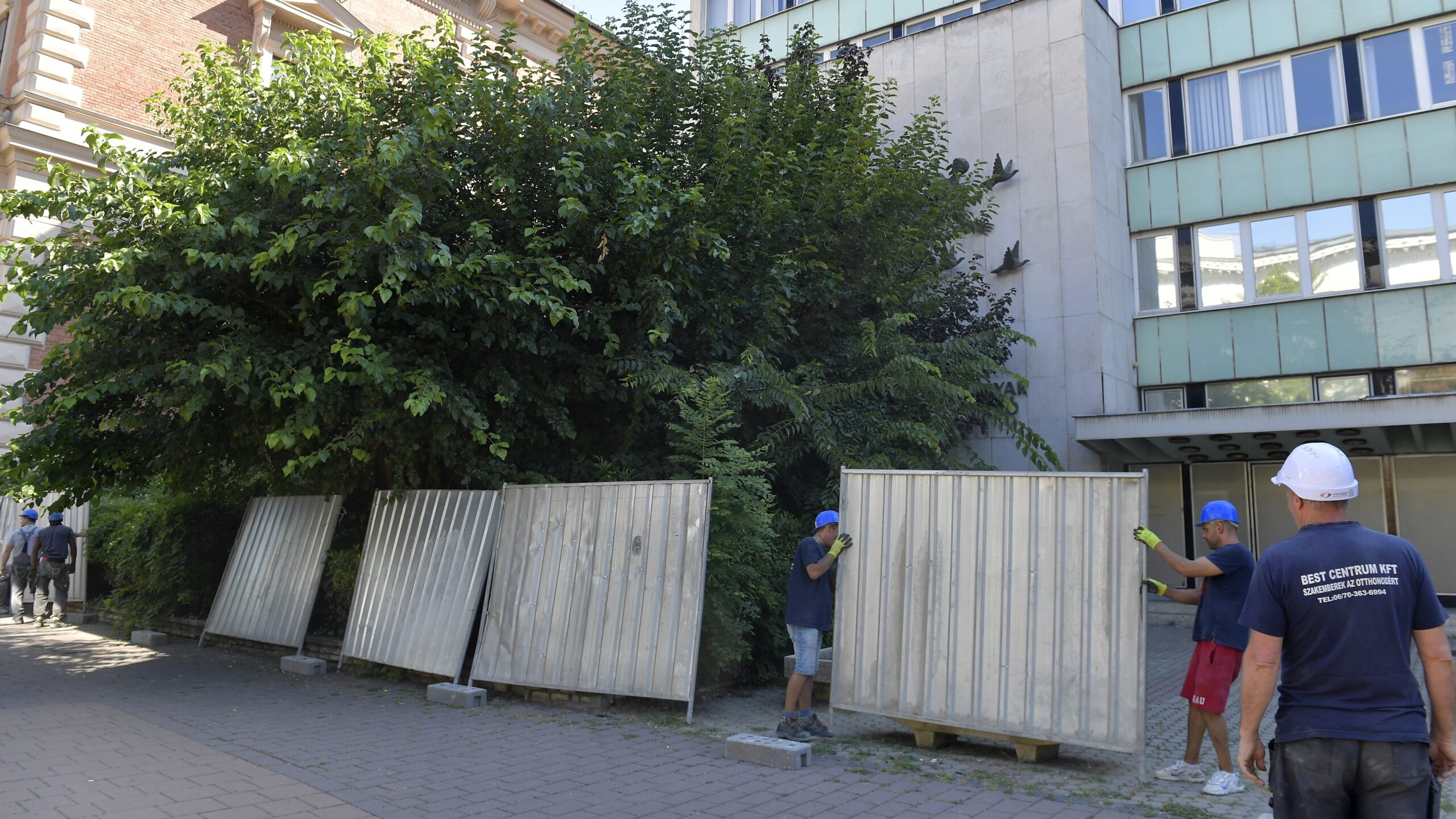With the cordoning off of the construction site on Wednesday morning, the construction work for the new central Budapest campus of the Pázmány Péter Catholic University commenced near the former headquarters of the Hungarian Radio.
At the press conference held on-site, State Secretary for Architecture at the Ministry of Construction and Transport Regő Lánszki stated that in the past 35 years, no educational institution investment of this magnitude occurred in Hungary,
making this project one of the largest and most significant state investments in Budapest.
The State Secretary announced that demolition work on the site will begin in September and is expected to continue until the following spring. In selecting the company for the task, priority was given to completing the work as quickly as possible while minimizing airborne dust emissions and adhering to the strictest vibration protection and hazardous material handling regulations.
Lánszki mentioned that the project’s scope, initially planned to cost between 200 and 250 billion forints and to be completed by 2027, has since changed. For instance, the dormitory initially planned for the campus will instead be built nearby. Consequently, the originally planned 62,000 square metres have been reduced to approximately 57,500 square metres on the 18,000 square metre property once used by public radio.
He added that the documents required for the approval of changes decided upon in consultation with stakeholders will be completed within a few months, followed by the detailed construction plans. Thus, construction work can begin right after the demolition has been completed.

The State Secretary emphasized that they are open to any rationalization proposals that do not compromise quality. However, he noted that any modification requests that would make the university campus project unfeasible could not be accepted.
He highlighted that in the currently dilapidated enclave, an innovative educational institution open in all directions will be created. The proportion of green spaces will increase from the current 7 per cent to over 20 per cent, resulting in a highly liveable urban area with a loose network of small spaces, inspired by Italian models. Meanwhile,
all three palaces on the site will be renovated and repurposed
in a manner worthy of the neighbouring Hungarian National Museum. Lánszki emphasized that no surrounding property would suffer damage or loss of function due to the work. He stressed that every forint spent would increase the area’s value by an additional four to five forints.
He mentioned that the façade of the radio building on Bródy Sándor Street will be preserved due to its historical significance. He added that the modern transformation of some buildings would require significant additional costs and compromises, which are ‘simply incompatible with what we want’, that is, with rationality and sustainability as top priorities.
‘For such an iconic building, it is crucial that it remains timeless while still appearing contemporary. The goal is to create an enduring work, and I believe this plan fully ensures that,’ he concluded.
Related articles:








